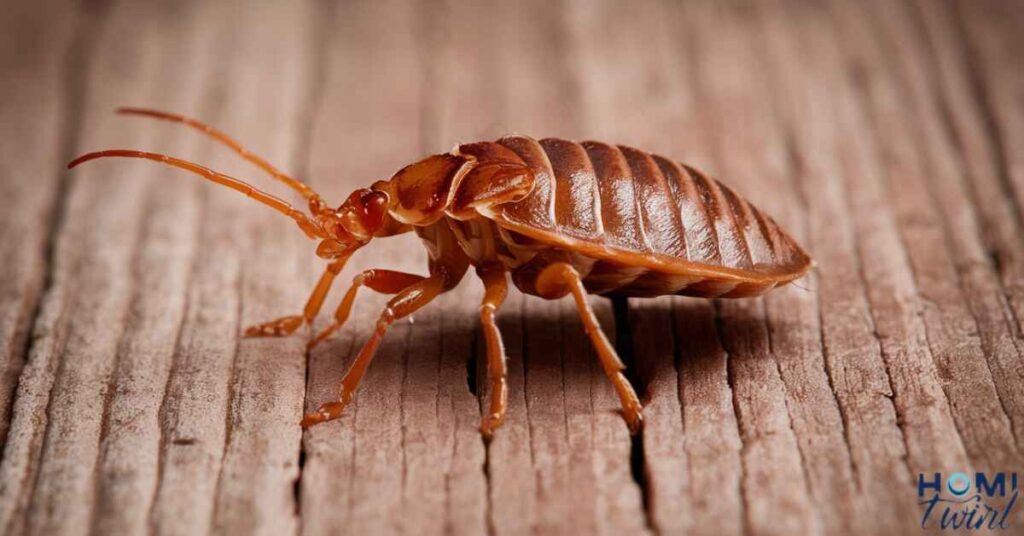Bed bugs spread rapidly from room to room, often hitching a ride on human clothing or belongings, moving within seconds.
They can also crawl unassisted, covering distances up to 100 feet per hour. Without immediate treatment, bed bugs multiply quickly, with females laying up to seven eggs daily.
Early detection and prompt professional extermination are crucial to prevent a minor infestation from escalating into a widespread problem throughout the house.
How Swiftly Bed Bugs Conquer Your Home

There are few things more unsettling than the realization that your home has become infested with bed bugs. These tenacious pests can turn your sanctuary into a nightmare of itchy bites and sleepless nights. But just how fast do bed bugs spread from room to room? The answer may leave you scrambling for the nearest pest control professional.
Read This Blog: DO BED BUGS LIKE COLD ROOMS
Once bed bugs gain a foothold, their march through your living spaces is alarming. Understanding their remarkable mobility and reproduction rates is crucial for containing an infestation before it spirals out of control. In this comprehensive guide, we’ll explore the frightening facts about just how rapidly these bloodsuckers can overwhelm your home.
Do Bed Bugs Typically Remain Confined to One Room?
A common misconception is that bed bugs tend to stay localized in one area like a bedroom. However, this couldn’t be further from the truth. Bed bugs are constantly driven by their incessant need to feed on human blood. As a result, they will relentlessly spread from room to room in pursuit of their next meal.
While bedrooms are often ground zero for infestations due to overnight human presence, bed bugs quickly disperse to other high-traffic areas. Living rooms, home offices, and any other rooms where people lounge or sleep become prime targets. Left unchecked, it’s just a matter of time before bed bugs establish themselves throughout your entire home.
How Swiftly Can Bed Bugs Crawl Across a Home?
Despite being wingless insects, bed bugs are remarkable crawlers that can rapidly traverse even large homes. At their peak stride, these pests can scurry along at a speed of 4 feet per minute. While that might not sound exceptionally fast, it translates to astonishing mobility over longer periods.
In just a single hour, bed bugs can realistically travel more than 100 feet. This not only allows them to easily crawl between adjacent rooms through wall cracks but traverse entire floors or buildings. Their amazing stamina combined with their drive to locate human hosts makes their spread from room to room almost inevitable.
The Blitzkrieg Reproduction of Bed Bug Populations

What makes the proliferation of bed bugs from room to room even more alarming is their explosive reproductive potential. A single female bed bug can kickstart an exponential population boom.
- Females lay around 1 egg per day, with peaks of 5-7 eggs
- Eggs hatch within a mere 10-15 days
- Newly hatched nymphs reach reproductive maturity in as little as 6 weeks
- Most bed bugs live for 4-6 months
From even a few survivors of an initial infestation, thousands of new bed bugs can emerge within just 2-3 months. This exponential growth ensures infestations can rapidly escalate from an isolated problem to a full-blown residential takeover.
The Principal Culprit Behind Room-to-Room Spread
While bed bugs are adept crawlers over lengthy distances, their ability to hitchhike on humans is the primary driver behind galloping room-to-room infestations. Bed bugs are biologically wired to loiter near their human hosts, hungry for their next blood meal.
As people go about their daily routines transitioning from bedrooms to living areas to home offices, bed bugs easily latch onto clothing, bags, and possessions. This human-assisted travel allows the infestation to disperse far more rapidly than crawling alone. Unknowingly, we become shuttles facilitating the bugs’ colonization efforts.
Also Read This Blog: HOW TO REFINISH BATHROOM VANITY
Proven Tactics to Contain the Contagion

With bed bugs’ remarkable speed and reproductive prowess, trying to corral or “outwait” an infestation is a futile exercise. The moment bed bug presence is suspected, taking immediate and comprehensive steps is critical.
- Schedule a professional inspection ASAP: Experienced pest control technicians know all the nooks and crannies to meticulously check. Early detection is key.
- Enlist professional heat treatment or chemical services: DIY methods are no match for severe infestations. Pros utilize special equipment and products for complete elimination.
- Prepare for potential room-to-room treatment: Even if current signs point to one room, informed pest controllers expect bed bugs to have spread further. Comprehensive multi-room treatment is often wise.
- Launder and encase: Wash all linens, bedding and clothing. Use mattress/box spring encasements to entomb any lingering bugs during treatment.
- Discard heavily infested furniture: In cases of extreme infestation, it may be necessary to dispose of infested furniture that can’t be effectively treated.
“A 2018 study found that out of 1,000 houses inspected for bed bugs, 28% had infestation spread across multiple rooms.” – Mark L., Entomology Specialist
Trying to isolate or weather out an infestation by switching rooms is futile. Bed bugs will quickly follow, aided by their speed, persistence, and instinct for human hosts. Only rapid professional intervention can neutralize and eradicate these unwanted roommates.
Frequently Asked Question
How quickly can bed bugs travel between rooms?
Bed bugs can crawl over 100 feet in just an hour. They also spread rapidly by hitching rides on humans, clothing, and belongings.
Do bed bugs tend to stay isolated in one room?
No, bed bugs constantly seek new human hosts to feed on. If left unchecked, they will spread from the initial infestation room to living rooms, bedrooms, and beyond.
What’s the typical speed a bed bug crawls?
At peak speed, bed bugs can crawl around 4 feet per minute. However, their effective traveling rate allows crossing entire homes swiftly.
How fast do bed bug populations multiply?
Alarmingly fast – a single female can lay 1 egg per day, and those eggs hatch in just 10-15 days to restart the cycle.
What causes bed bugs to spread most rapidly?
Their instinct to hitchhike and latch onto humans for transportation is the biggest spreading factor, far more than crawling alone.
How can I stop bed bugs from spreading to new rooms?
The only reliable way is immediate professional heat treatment or chemical extermination. Delaying allows exponential population growth.
If I keep switching rooms, can I avoid spreading bed bugs?
No, relocated bugs will simply follow you and your warmth/CO2 signature to set up new infestation sites in the new rooms.
Conclusion
The harsh reality is that bed bug infestations, if not swiftly neutralized, inevitably metastasize throughout homes at an alarming pace. Their incredible mobility, ability to hitchhike, and unchecked reproduction allow even a few initial bugs to rapidly conquer new rooms and spaces.
From lurking in furniture to crawling across floors to capitalizing on human transport, bed bugs leverage every available vector to spread their reach. Delaying treatment is to surrender more territory to an exponentially growing adversary.
At the first sign of bites, shed casings, or other evidence, residents must act decisively by soliciting professional inspection and extermination services. Quarantining infestations or hoping they’ll remain contained is an invitation for a full-blown infestation nightmare. With perseverance and professional support, your home can be liberated from these voracious intruders.







